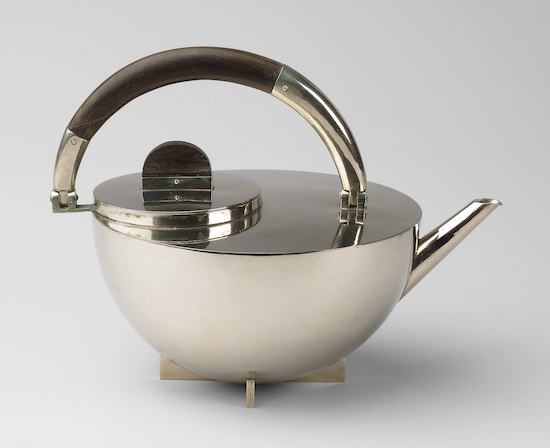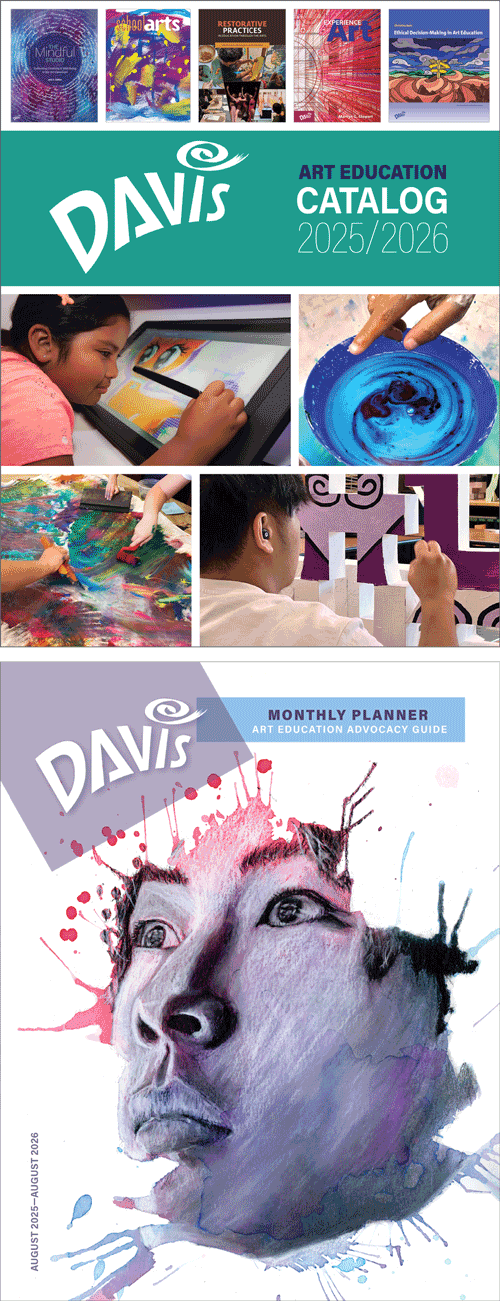Artist Birthday: Marianne Brandt
Between 1919 and 1933, Germany was the site of one of the first art schools that emphasized contemporary modernist style in fine arts being applied to industrial arts. Marianne Brandt was a pioneer in the Bauhaus style, one of the foundations of which was geometric abstraction.
Artist Birthday for 1 October: Marianne Brandt (1893-1983 Germany)
 |
| Marianne Brandt for Bauhaus Metal Workshop, Teapot, 1924, nickel silver and ebony, height: 17.8 cm The Museum of Modern Art, New York, © 2025 Artists Rights Society (ARS), New York (MOMA-D0059bwars) |
Brandt's designs were never consciously progressive nor were they meant to be revolutionary. She felt she was simply filling the needs of the time. Her designs followed the fundamental philosophy of the Bauhaus metal workshop: objects were reduced to their purist geometrics that emulated mass-produced objects. This was the essential philosophy of the Bauhaus' founder, Walter Gropius (1883-1969).
Brandt learned to form a clear formal artistic language that reduced household objects to simple geometric shapes with sophisticated, refined surfaces. Her teapot was inspired by Russian Constructivism, particularly the collages of László Moholy-Nagy (1895-1946). Constructivism emphasized the use of industrial technology on fine art works. Unfortunately, the complex arrangement of forms in the teapot proved too complex to achieve her original objective of manufacturing it industrially. This was the first of seven prototypes produced by Brandt while a Bauhaus student.
Background
There was a widespread rebellion against conservative, academic art institutions starting in the 1870s in Europe. These institutions proscribed ways of doing things both stylistically and technically. They were also not welcoming to women and minorities. Patronage was almost impossible without associating with these institutions. Impressionism is a key example of this rebellion. At the same time, groups formed that wanted to return the quality of art to pre-industrial times. Vienna Werkstätte, Arts and Crafts Movement and Art Nouveau were examples of those movements. A major concern of these movements was the integration of all arts and functional objects.
The Bauhaus (school) was formed after World War I (1914-1918) in Europe to address the idea of interdisciplinary combination of fine art and industrial design. The school encouraged a search for universal forms, and a promotion of the aesthetics of industrial production as an influence on fine art design. The Socialist tendencies of the school also encouraged coed education in all fields except glass and architecture, a first in post-war Germany.
Marianne Brandt, a pupil and later instructor of the Bauhaus, is primarily renowned for her brilliance in metal arts as well as industrial design. Born in Chemintz, Germany (south of Berlin in eastern Germany), her earliest artistic training was private in 1911. She studied at Bauhaus (painting and sculpture) in 1919 before going to Paris and southern France in 1920.
She subsequently enrolled at Bauhaus in 1924, studying under Josef Albers (1888-1976), Paul Klee (1879-1940) and Vasili Kandinsky (1866-1944). Her studies in the metal workshop under Hungarian abstractionist Laszlo Moholy-Nagy (1895-1946) had the greatest impact on the direction she took as an artist.
Between 1927 and 1929 she organized experiments in lighting in the metal workshop, becoming the director of it in 1928. She also helped organize collaborations between the Bauhaus and design companies such as Körtning und Matghiesen AG in Leipzig, Schwintzer and Gräff in Berlin, and Ruppelwerke GmBH, Gotha, the company with which she designed many objects.
Correlation to Davis program: Davis Collections -- Women Artists 1900s

Comments